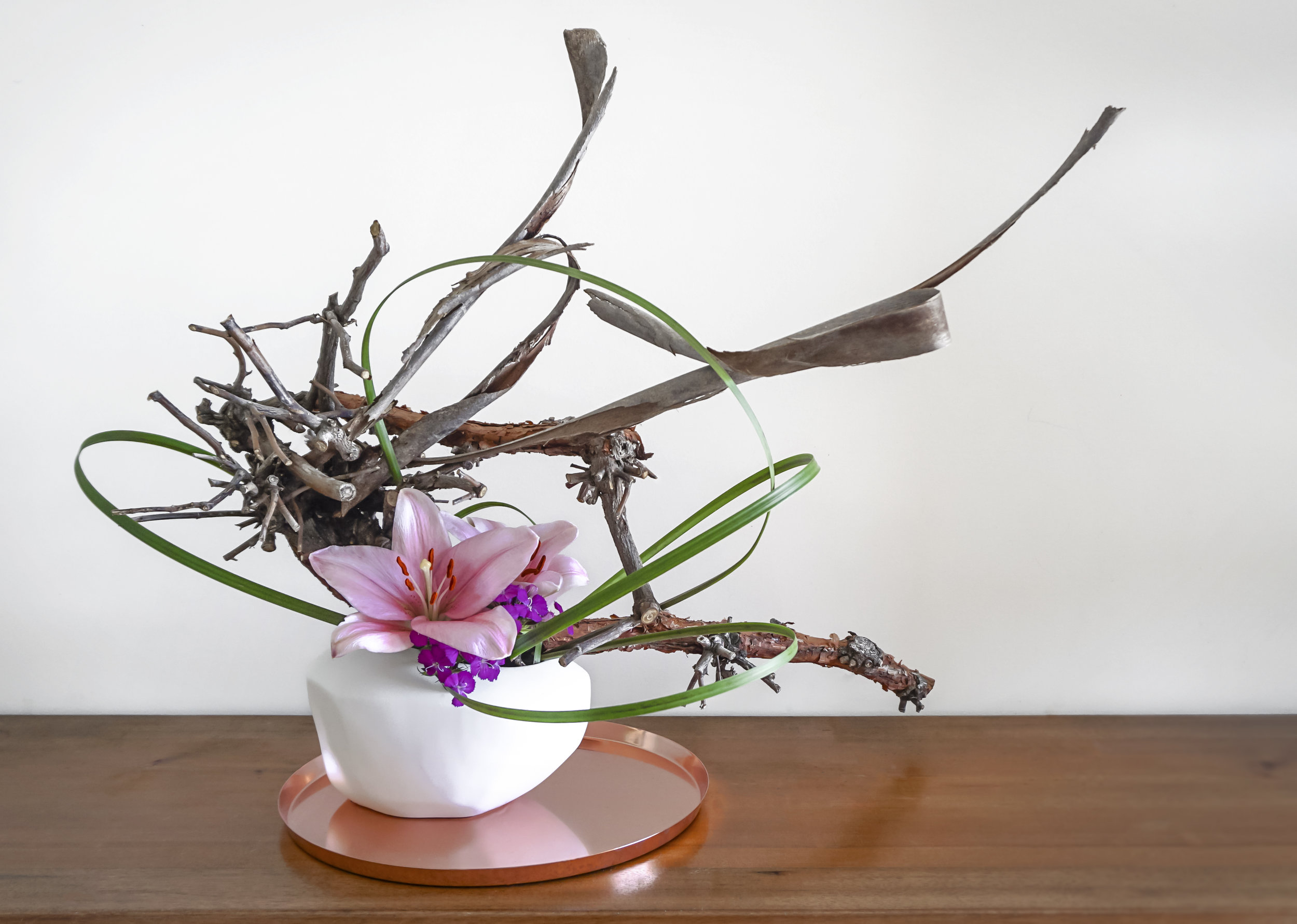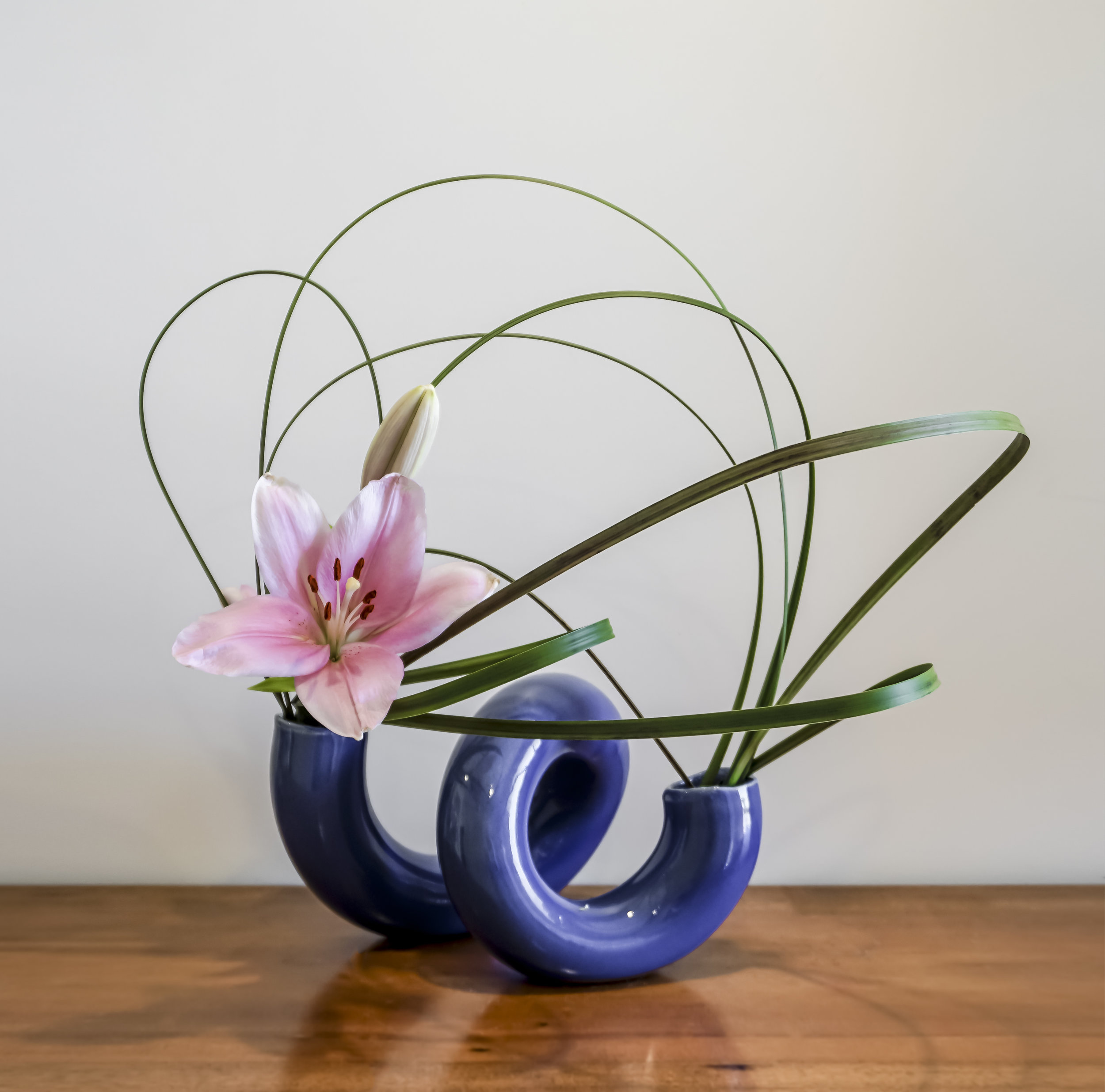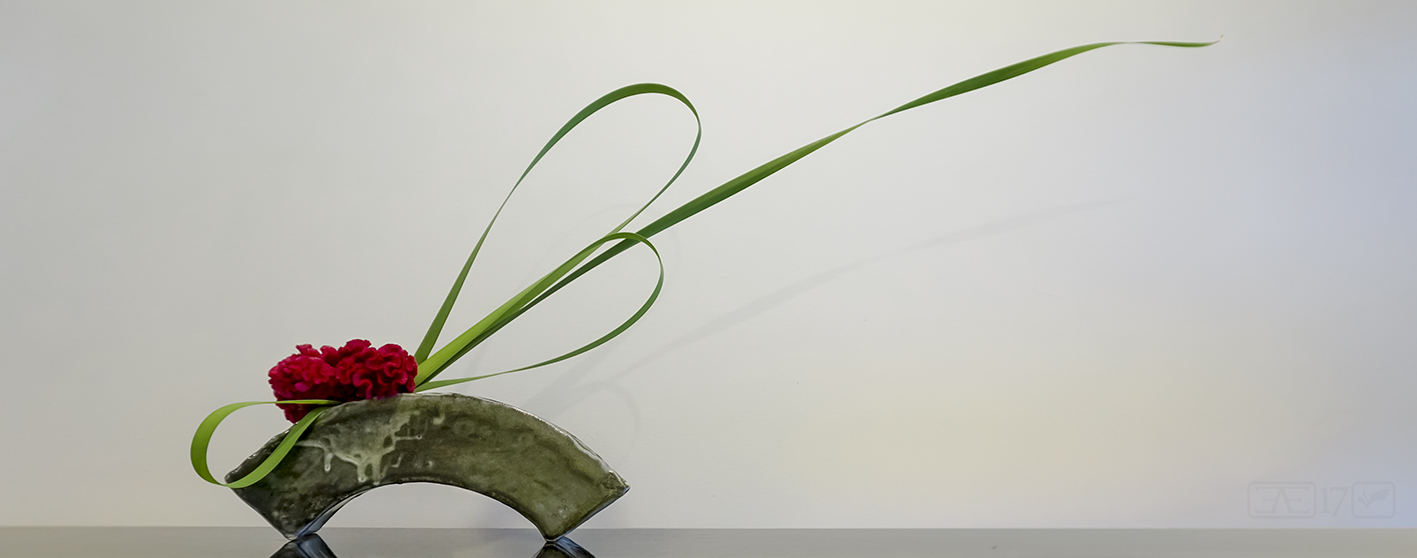Today was the final couple of classes for the year for me. It's been such an amazing journey and it was lovely to finish on a positive note with some arrangements that I was quite happy with.
This lesson was about focussing on dried, coloured or bleached materials. I used the dried leaves of the giant fig that had been so generously provided by Kevin Wallpole a few weeks prior. I had allowed the leaves to dry naturally and then I had spray painted them in a few different colours so as to best bring out their texture and surface qualities. I combined the leaves with some smoke bush and a tiny bit of sea holly which complimented the main focus of the arrangement very nicely without overwhelming or competing for attention. I chose a container that had a very controlled and almost technological feel to it as a contrast to the wild and wonderfully chaotic nature of my dry materials... I was so pleased with the outcome. Bold, dramatic and dynamic!
The second lesson for the day was about creating an arrangement that would be suitable to be viewed from above. Interestingly this most often means that it will also be viewed in 360 degrees and so needs to look pleasing from all sides. I was so fortunate to have a friend provide me with some artichoke in full bloom and in bud. In ikebana terms, this was a treasure and so I just had to make use of it in this arrangement. Combined simply with some sea holly and some flax I was very happy with the result.
The final lesson for the day was about creating arrangements that would be suitable to be viewed from below. They might possibly be positioned on a high shelf, a ledge or the top of a cupboard or in some other similar location. Quite a tricky exercise to do I managed to make two quite nice arrangements. Unfortunately I had a bit of a headache by this stage as it was a VERY hot day and so I don't feel these are my very best work, although they definitely meet the criteria for the lesson, and my teacher quite liked what I had done. These final two photographs have quite a bit of photo editing as the lighting and position options in the studio were a bit tricky to manage but I believe I have been able to show the essence of each of the arrangements. In the end my teacher and I both felt it was a very successful and pleasant day of classes, we wished each other a happy holiday season and farewell until the new year.
























